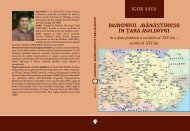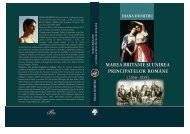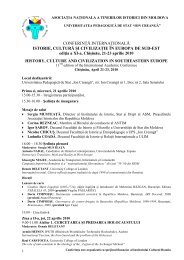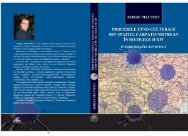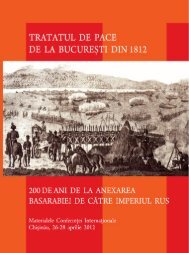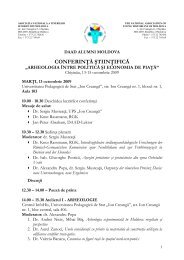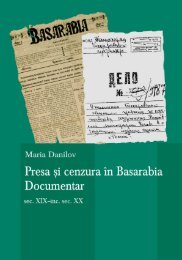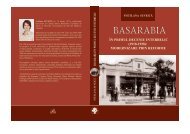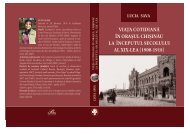That is why they tried to use Slavic factor in Latgalian region and re-orientate it toward Belarus, but they were not able to realize this political slogan 1 . Misfortune of Belarus nationalists only underlined common weakening of the Slavic (Polish, Russian and Belarus in the same time) influence in Latgale. Belarus nationalists tried to use Latvian authorities as their own instrument for weakening of the influence. It was known that illegal Polish schools were opened in different places of Latgale. This action was understood in Riga as hostile. That is why head of Daugavpīls school department Sebastjans Paberzis in 1924 wrote in his letter to the vice-minister dominiks Jaudzeps, that “Latvians must support aspirations of Belaruses, while we will not become stronger, and will not kill Polish influence”. Such policy was motivated by necessity of opposition to Polish “chauvinistic politicians”. In such situation authorities aimed to weaken Polish aspiration and maintain Latvian political interests. Later, Latvian authorities tried by statistical means to understate number pf poles in Latvia and during censuses Poles were forcedly written in its results as Belaruses or Latvians. But soon Latvian policy changed and they started to <strong>cu</strong>ltivate Latgale as Latvian lieux de memoire without any influential mom-Latvian elements. Latvian authorities organized anti-Belarus campaign in which Russian nationalists also took part. In result Belarus Department of Ministry of Education was closed. Belarus nationalists were repressed. As for modern Latvian historians, they don’t deny the facts about magnificent role of Belaruses in Latvian history. ilga Apīne, for example, presumes that Belarus community belongs to the number of traditional ethnical groups which has developed contacts with Latvians 2 . So Latvian intellectuals try to underline fact that Latgale is the land where different national identities and historical memories met. That is why in the intellectual history there is place for Latgale as not Latvian, but also Belarus lieux de memoire also 3 . As we see, historically Latgale developed as contact zone between different neighboring nations with their own identities and memories. All these nations were able to find place in their historical memories and national mythologies for Latgale. Nationalistic intellectuals, belonged to these groups, proposed different project of Latgale as part of their own identity. In this confrontation they widely used history, operated by facts and dates. They understood history and analyzed past of Latgale in such ways which assisted to their national aspirations. Some of these projects were serious, others – marginal. Latvian and partly Latgalian nationalists won, and Polish and Belarus were losers in this struggle for Latgale. Latvian and Latgalian projects are real now and they are popular among local intellectuals. Polish and Belarus ones are parts of Polish and Belarus historical memories. Latvian and Latgalian intellectuals mentally control <strong>cu</strong>ltural processes in contemporary Latgale, but Polish and Belarus intellectuals can only remember and re-think historical experience of their communities in Latgale. Latgale as lieux de memoire is complex project. Latvian, Belarus, Latgalian and Polish intellectuals developed different narratives. They expressed them and popularize them in different ways. They studied language and history, used literature for national and nationalistic propaganda. Each of mentioned above projects was also complex and had different levels and expressions. And I hope that Latgalian past and present, local memory and identity – all factors which forms phenomenon of Latgale as lieux de memoire – will be in the center of other studies, that will assist to development of Baltic Studies in general and Latgalian Studies in parti<strong>cu</strong>lar. Bibliography APINE, I., 2001, Mesto belorusov Latvii v riadu drugikh narodov, in Belaruskaia dyiaspara iak pasrednitsa tsyvilizatsij, Mensk, 43 – 46. APINE, I., 1995, Baltkrievi latvija, Rīga. APINE, I., VOLKOVS V., 1998, Slavi latvija, Rīga. BARKOVSKA, G., 2003, Sabiedriskā dzīve Dvinskā XX gs. sākumā laikraksta “Drywa” slejās (1908-1914), in Daugavpils universitātes Humanitārās fakultātes Xii Zinātnisko lasījumu materiāli. Vēsture, VI/I, 14. – 20. BOGORODITSKII, V., 1909, Ocherki po iazykoznaniiu i russkomu iazyku, Kazan’. BREIDAKS, B., 1992, Latgalīšu literarō volūda: nūstōdnis un problemys, in Olūts: Rokstu krōjums, 8. 1 EKABSONS, 2001, 47 – 71. 2 APINE, 2001, 43 – 46. 3 APINE, 1995; APINE, VOLKOVS, 1998. – 1 –
BREŽGO, B., 1940, Latgalos zemnieku krivu dzymtyušanas laikus, Vilaka. BREŽGO, B., 1954, Latgales zemnieki pēc dzimtbūšanas otcelšanas 1861.-1914, Rīga. BREŽGO, B., 1944, Aizlīgums īspīst latgaļu grōmotas latiņu burtim un aizlīguma laiks Latgolā: 1865 - 1904, in Rokstu krōjums latgaļu drukas aizlīguma atceļšonas 40 godu atcerei, Daugavpiļs. BUKŠS, M., 1948, Pīzeimes par Senēju Latgaļu resp. latvīšu volūdu, Traunstein. BUKŠS, M., 1957, Latgaļu literatūras vēsture, Minchene BUKŠS, M., 1961, Latgaļu volūdas un Tautas izplateibas Problemas, Minchene DIKMANN, K., 2001, uel’s: vnutrenniaia koloniia ili baryshnik? in evropeiskie vnutrennie periferii v XX stoletii. Sbornik nauchnykh trudov, Kaluga. DONTSOV, Dm. 2001, Suchasne politychne polozhennia natsiiji i nashi zavdannia (Referat, vyholoshenyi na ii Vseukraijins’kim students’kim z’ijizdi v lypni 1913 roku u L’vovi), in DONTSOV Dm. tvory. Vol. 1. Heopolitychni ta ideolohichni pratsi, L’viv. EKABSONS, E., 2001, Belorusy v Latvii v 1918 – 1940-kh godakh, in Belaruskaia dyiaspara iak pasrednitsa tsyvilizatsij, Mensk, 47 – 71. EZAWITAW, K., 1927, Belarusy w latvii, Ryga. JEKABSONS, E., 1996, Latvijas un Baltkrievijas Tautas Republikas attiecības (1919 - 1920), in latvijas arhivi, 1996, 1 – 2, 35 – 41. JEZAVITOVS, K., 1923, Par baltkrieviem un lielkrieviem latvija, in izglītības Ministrijas Menešraksts, nо. 1. KEMPS, F., 1910, Latgalieši, Rīga. KEMPS, F., 1991, Latgales likteni, Rīga. KRASNAIS, V., 1938, Baltkrievi ka latviešu tautas zars, Rīga. KURSĪTE, J., 1999, Latgale Latvijā: latgaliešu literatūras likteņi, in Acta Latgalica 10. Zynōtniski roksti, dokumenti, apceris, Daugavpils. LIS, M., 1997, Siargei Saharaw i belaruska-baltsskie suwazi, in Belarus’ pamizh uskhodam i Zahadam. Problemy mizhnatsyianal’naga i mizhkul’turnaga wzaemadzeiannia, dyialogu i sintezu, Mensk, 329 – 334. LELIS J., 1968, Latgaļu literaturōs volūdas izceļsme, vēsture un nūzeime, in Acta Latgalica, 2. LAIZĀNS, P., ZEILE, P., 1958. Latgaļu literatūras un preses mantojumu vēttējot, in Karogs, 11 NITTS I., 2001, Vklad istoricheskoi geografii v issledovaniiakh periferii, in evropeiskie vnutrennie periferii v XX stoletii. Sbornik nauchnykh trudov, Kaluga. MANTEUFFEL, G., 1897, inflanty Polskie, Poznań. NOL’TE, H.-H., 2001, evropeiskie vnuterennie periferii – skhodstva, razlichiia, vozrazheniia protiv kontseptsii, in evropeiskie vnutrennie periferii v XX stoletii. Sbornik nauchnykh trudov, Kaluga POLLARD, S., 1995. Marginal Areas. Do they have a common History, in Towards an international economic and Social History, Genf, 121 – 136. PSHENICHNIKOV, P., 1910, Russkie v Pribaltiiskom krae. istoricheskii ocherk, Riga. SKRINDA, O., 1908, Latwīšu woludas gramatika, Peterburgā. SŁOŃSKI, E., 1912, Z okolic Dźwiny, Witebsk. SOMS, H., 2003, Albums “Terra Mariana” Latgales historiogrāfijas skatījumā, in Daugavpils universitātes Humanitārās fakultātes Xii Zinātnisko lasījumu materiāli. Vēsture, VI/II, 45. – 49. SHKANDRIJ, M., 2004, V obijmakh imperiiji. Rosijs’ka i ukraijins’ka literatura novitn’oiji doby, Kyijiv. SHKANDRIJ, M., 2001, Russia and ukraine. Literature and the Discourse of empire from napoleonic to Postcolonial times, Montréal SPRINGOVIČS, Z., 1961., Latgale un katoļu baznīca, Rīga. TAIVAN, L., 1988, Po Latgale, Moskva. VALEINIS, V., 1999, Franča Trasuna daiļrades žanri, in Acta Latgalica 10. Zynōtniski roksti, dokumenti, apceris, Daugavpils. VALTERS, M., 1955, Latvija un Latgola. Kulturvēsturiski materiali ZEILE, P., 1999, Kazimirs Buiņickis - sociālo reformu rosinātājs Latgalē, latviešu vienotības paudējs, rakstnieks un publicists, in Acta Latgalica 10. Zynōtniski roksti, dokumenti, apceris, Daugavpils. ZEPS, V.J., 1995, Latgalian Literature in exile, in Journal of Baltic Studies, XXVI, 4. ZEPS, V.J., 1962, Latvian and Finnic Linguistic Convergence, Bloomington. – 1 – © maksym W. KYRCzaniW, 008
- Page 1 and 2:
analele asocıaŢıeı naŢıonale
- Page 3 and 4:
cuprıns epoca antică Corneliu Bel
- Page 5 and 6:
Epoca antică - -
- Page 7 and 8:
diman, 2003c, 2003d, 2004b, 2004d).
- Page 9 and 10:
effectifs et typologie Plus de la m
- Page 11 and 12:
technologiques et culturelle durant
- Page 13 and 14:
CÂRCIUMARU M., MĂRGĂRIT M. et al
- Page 15 and 16:
Fig. 2. Art mobilier au Paléolithi
- Page 17 and 18:
ıdentıtate socıală Şı podoaBe
- Page 19 and 20:
IIIb-IIIc, etapa de locuire A. Pies
- Page 21 and 22:
Cronica cercetărilor arheologice d
- Page 23 and 24:
Fig. . Valve de Unio sp. aparţinâ
- Page 25 and 26:
Dunării a trecut prin teritoriul d
- Page 27 and 28:
ea a fost catalogată ca un mare ca
- Page 29 and 30:
cunoaşte dacă exista şi un recip
- Page 31 and 32:
înşiruire ne poate oferi o idee
- Page 33 and 34:
BıBlıoGraFıe cataloaGe Price 199
- Page 35 and 36:
Poenaru Bordea 2001 - Gh. Poenaru B
- Page 37 and 38:
consıderaŢıı prıvınd Încadra
- Page 39 and 40:
proporţia acestora. În total au f
- Page 41 and 42:
ZusammenFassunG ÜBerleGunGen Zur K
- Page 43 and 44:
Fig. 4. Vârfuri de lance din epoca
- Page 45 and 46:
Plecând de la aceste observaţii,
- Page 47 and 48:
venind din flota de la Misena, ce s
- Page 49 and 50:
După reprimarea marilor răscoale
- Page 51 and 52:
Claudia, la Durostorum (Silistra),
- Page 53 and 54:
Archaeology dell’Universitá di S
- Page 55 and 56:
draGomır, ı. t. 1 . Descoperiri a
- Page 57 and 58:
a. b. Fig. 1. Bărboşi. Promontori
- Page 59 and 60:
arHeoloGıe Şı polıtıcă: caZul
- Page 61 and 62:
şi au construit un stil maiestuos,
- Page 63 and 64:
cultura drıdu Şı evoluŢıa poZ
- Page 65 and 66:
istorice ale unor realităţi arheo
- Page 67 and 68:
lui Adrian Păunescu la începutul
- Page 69 and 70:
omâni în timpul regimului comunis
- Page 71 and 72:
Ages: Issues and Readings, Oxford,
- Page 73 and 74:
neapărat să explice vizitatorilor
- Page 75 and 76:
determınărı & dımensıunı ale
- Page 77 and 78:
utilizează fonduri de stat - au î
- Page 79 and 80:
teorıa celor două popoare - stud
- Page 81 and 82:
„din secolul al Vi-lea până la
- Page 83 and 84:
leme neclarificate. La acestea adă
- Page 85 and 86:
elaŢııle domnılor moldoveı cu
- Page 87 and 88:
în perioada pribegiilor sale la ac
- Page 89 and 90:
ınFluenŢa unıverstăŢıı dın
- Page 91 and 92:
Košice, cum ar fi, spre exemplu, u
- Page 93 and 94:
extindere, cîţiva studenţi de la
- Page 95 and 96:
Majoritatea studenţilor de la Koš
- Page 97 and 98:
estul Germaniei. În 1599 Bocacius
- Page 99 and 100:
tät, Land und Konfession 1500 bis
- Page 101 and 102:
Fig. 1: Universităţile germane ex
- Page 103 and 104:
de la Oliva, ci a încheiat separat
- Page 105 and 106:
Grecıı În comerŢul cu ımperıu
- Page 107 and 108:
proveneau din dările pe vite 1 şi
- Page 109 and 110:
iStORia ROmÂnilOR 2003, vol. V, Ed
- Page 111 and 112:
îi permitea să-şi formeze o opin
- Page 113 and 114:
Cât priveşte St. Leszczynski, dat
- Page 115 and 116:
vizată doi sultani au fost înlăt
- Page 117 and 118:
suedezul în schiţa lui Nicolae Mu
- Page 119 and 120:
alta. Acest proces şi războaiele
- Page 121 and 122:
În aceste condiţii, singura solu
- Page 123 and 124:
Militantul pentru idealurile naţio
- Page 125 and 126:
Bibliografie BODEA, D., 2000. Cuvâ
- Page 127 and 128:
evoluŢıa ımaGoloGıcă a revolu
- Page 129 and 130:
fost creat prin discursul politic,
- Page 131 and 132:
Poporul a fost perceput ca un compl
- Page 133 and 134:
orchestrate de soldaţii secui. Act
- Page 135 and 136:
capabil de a sensibiliza o populaţ
- Page 137 and 138:
olul noBılımıı În vıaŢa puBl
- Page 139 and 140:
ton de Verrayon se propune; a scoat
- Page 141 and 142:
ezumé L’article ,,Le rôle de la
- Page 143 and 144:
olul Şı locul mınorıtăŢılor
- Page 145 and 146:
aspecte ale proGramuluı Şı actı
- Page 147 and 148:
Manifestul din 17 octombrie 1905 a
- Page 149 and 150:
- fracţiunea „Trudovicilor”, c
- Page 151 and 152:
Cоnform informaţiilor secrete, or
- Page 153 and 154:
elaborate de către Comitetul unit
- Page 155 and 156:
locale, solicitând începerea miş
- Page 157 and 158:
„proBlema aromÂnă” Şı cauZe
- Page 159 and 160:
Amplificarea tensiunii diplomatice
- Page 161 and 162:
statul român nu avea cu cine să d
- Page 163 and 164: Atena s-au complicat pe fundalul co
- Page 165 and 166: generale sanitare; fiecare inspecto
- Page 167 and 168: „Monitorul oficial”, Nr. 154 di
- Page 169 and 170: jud. Soroca. În 1883 este admis la
- Page 171 and 172: necessıtY oF HumanıZatıon oF tea
- Page 173 and 174: Subject to «pro et contra», there
- Page 175 and 176: In Ukraine it is limited by the sys
- Page 177 and 178: - organizes certification of pedago
- Page 179 and 180: ınstıtuŢııle cultural-educatı
- Page 181 and 182: Soroca 1 - unica instituţie de pro
- Page 183 and 184: în Basarabia. Deja în cadrul lucr
- Page 185 and 186: „naţionalismul burghez”, absol
- Page 187 and 188: ÎnvăŢămÎntul ıstorıc superı
- Page 189 and 190: Menirea acestor instituţii era de
- Page 191 and 192: funcţia de decan al Facultăţii d
- Page 193 and 194: Bibliografie BURLACU, Valentin, 200
- Page 195 and 196: (ianuarie 1918), înăbuşind cu fo
- Page 197 and 198: Rusia, rămân sub dominaţia Porţ
- Page 199 and 200: această situaţie se datorează no
- Page 201 and 202: trecut complet sub tăcere pentru
- Page 203 and 204: etrospectıva deZvoltărıı orGan
- Page 205 and 206: cei care călătoreau pentru a găs
- Page 207 and 208: latGale as lIeUX De MeMOIRe: re-tH
- Page 209 and 210: It was mistake of Russian administr
- Page 211 and 212: unique historical way of Latgale -
- Page 213: intellectuals in Latgale were very
- Page 217 and 218: ţinut până la mijlocul secolului
- Page 219 and 220: fierari dintre vătraşi. Documente
- Page 221 and 222: gubernatorului Basarabiei, Scarlat
- Page 223 and 224: pămÂnturı natale, ıdeal naŢıo
- Page 225 and 226: vreme ce, la Reghin, nu exista o co
- Page 227 and 228: să intre trupele Antantei şi să
- Page 229 and 230: MAJDÚ, Tibor, NAGY, Zsuza L. 1990.
- Page 231 and 232: c) comentarii ale presei dobrogene
- Page 233 and 234: Un loc aparte au ocupat ştirile ca
- Page 235 and 236: Politica de rezistenţă declanşat
- Page 237 and 238: Bibliografie BERSTEIN, Serge, MILZA
- Page 239 and 240: în continuare arenda drept o form
- Page 241 and 242: Tabelul 2 Distribuirea cotelor-păr
- Page 243 and 244: internaţionale, unei societăţi d
- Page 245 and 246: aporturıle repuBlıcıı moldova c
- Page 247 and 248: nimeni nu are dreptul, nu va fi în
- Page 249 and 250: preşedintele Snegur drept „un su
- Page 251 and 252: o prăbuşire a pieţei ruse în 19
- Page 253 and 254: aBStRaCt On September 22, 1990, in
- Page 255 and 256: O alta prioritate în activitatea a
- Page 257 and 258: „cu alte republici ce şi-au proc
- Page 259 and 260: ımplıcaŢıı Geopolıtıce ale u
- Page 261 and 262: în localităţile locuite preponde
- Page 263 and 264: natală. De fapt, aceasta s-a făcu
- Page 265 and 266:
polıtıca statuluı FaŢă de ınt
- Page 267 and 268:
Politica statului sovietic faţă d
- Page 269 and 270:
5. АRTOBOLEVSKII I., VLADISLAVLEV
- Page 271 and 272:
Recenzii - 1 -
- Page 273 and 274:
În rezultatul analizei pieselor de
- Page 275 and 276:
ografia de la sfârşitul lucrării
- Page 277 and 278:
comprehension that besides the prom



